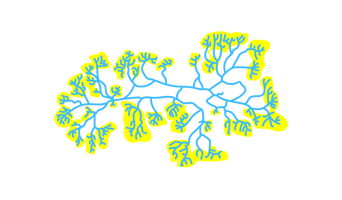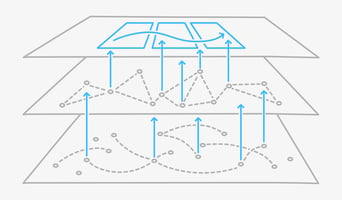Balancing centralization and decentralization is often one of the key issues in the design of organizational structures. A number of lead questions can help you start the conversation about what should be done centrally and which activities, deliverables and decisions should be allocated to decentral units.
Centralization vs. decentralization is one of the key organization design questions when it comes to delivering a digital strategy (or building new capabilities in general) in multi-divisional businesses. For example:
-
Do you build one central “digital” unit or team?
-
Or is it better to put digital resources into functions and divisions that support the respective functional strategies?
-
Or maybe you could strike a balance between central and decentral – but how would that balance work?
Organization design at Siemens and GE
Compare Siemens with GE and you find two different answers to this question.
GE took a centralized approach, at least for its big data unit Predix, which was organizationally and spatially placed outside of GE’s headquarters and which works horizontally across GE’s divisions.
Siemens, on the other hand, has followed more of a decentralized approach by aligning digital strategies vertically with its business units. (Siemens recently concentrated its innovation activities in its “next47” structure, but not, however, with the obvious intention of having this unit serve or work closely with its incumbent businesses.)
Get the centralization vs. decentralization tool from the
Organizational Structure Kit
Which approach is right?
The view that everything is (or will be) digital anyway doesn’t provide clear guidance. A central digital powerhouse, whose activities and processes are properly linked with the business divisions, can, in principle, lead to as thorough a transformation as a decentral build-up of digital capabilities that transforms a business from inside.
In general, the centralized approach reduces the risk of the incumbent management structure killing new ideas that don’t fit the routines and success criteria of a pre-digital world.
On the other hand, there are often crucial resources and capabilities that need to be part of the cross-functional teams that seek to build new products or business models.
For example, if you’re building a whole new digital offering for your existing clients, you won’t want to forego crucial client insights from your marketing and sales people. But such a requirement alone doesn’t lead to a clear decision for going central or decentral in terms of structure.
Work on your unit structure
Following the framework of the Organizational Structure Kit, the question of centralization vs. decentralization relates to the unit structure of an organization. This unit structure is informed by required activities and capabilities to drive a strategy within a defined scope and has implications for structural interfaces (links) and how decision making is defined in an organization (shape).
Using our Kit’s approach as a tool to think through the central vs. decentral question, we came up with a number of lead questions and criteria to consider:
-
Capabilities and unit structure: How important is focus on digital capabilities and functional excellence compared to integration of digital capabilities with existing businesses and resources? A narrow focus e.g., on a marketing app that enhances customer relationships, suggests a close integration with the marketing function. However, it will probably not lead to the development of new business models.
-
Links and unit structure: Whether you go down the centralized or the decentralized route will have implications for structural interfaces. If there is a centralized digital powerhouse, a key structural interface will be at the top management level. In a decentralized set-up, overall integration of digital capabilities will depend on lateral processes between units, with the risk of fragmenting the digital approach.
-
Shape and unit structure: Who makes which decisions regarding digital topics? In a centralized approach, the digital powerhouse can develop its own way of working, capabilities, and decision making rhythms, including, crucially, a sufficient level of autonomy for project teams to adapt to its learnings in an agile way. In a decentralized approach, the new capability will have to fit in with routinized ways of doing things and making decisions. The question then becomes: Is the innovation and change capability within your given units sufficient to support a genuinely new approach to thinking about your business?
As part of our Organizational Structure Kit we have built a tool to support the balancing of centralization and decentralization in organization design.
Also read on our blog :
-
Decentralized organizations: traditional and radical approaches: One key idea behind decentralization is to give decision-making power to those who know best. Traditional approaches embed decentralized authority into a rigid framework of centrally defined checks and controls. Radical types of decentralization extend the scope and the depth of decentralized decision-making in organizations
-
Making sense of vertical and horizontal decentralization: Companies that want to strengthen their self-organizing capabilities have to move from managerial delegation to granting the authority to self-manage in a well-designed, decentralized approach. This can be achieved by moving incrementally away from traditional vertical decentralization towards horizontal decentralization in the organization’s design.
-
Decentralized systems require decentralized governance: Compliance and control are often raised as concerns when managers discuss potential moves towards higher levels of self-management in their organizations. In this blog post we discuss the requirements and principles for decentralized governance to effectively replace oversight and control that has traditionally been based on boss-subordinate reporting relationships.
-
Building effective governance in decentralized organizations: How do you replace oversight systems based on managerial hierarchy with decentralized governance systems, in order to support higher levels of self-organization? In this blog post we discuss four questions to guide the journey towards decentralized set-ups.




